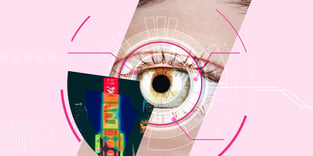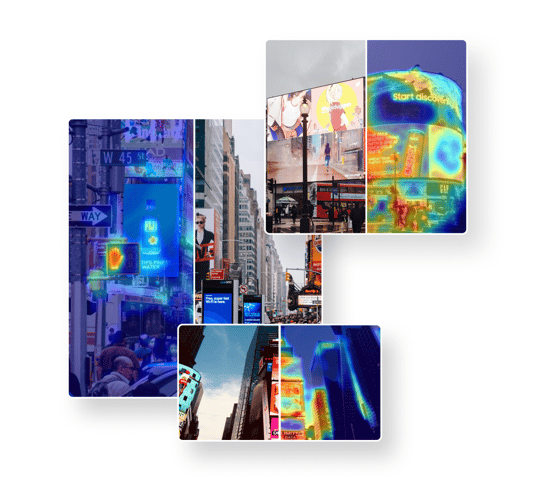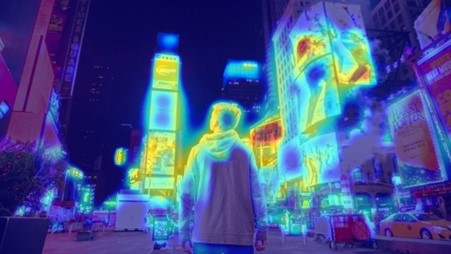What is Eye Tracking Technology?
Eye tracking technology measures the point of gaze or the motion of an eye relative to the head. It typically requires sensors and cameras to track head and eye movement. Eye tracking helps to better understand human behavior as well as their thinking processes.
What You Need to Know About Eye Tracking Technology and AI
Getting audiences to pay attention is a challenge for any business. Research varies, but most findings suggest you have about eight seconds to engage with a customer, and even that veers on the generous side. Some cite the number closer to two seconds. Essentially, it means that brands have a short window to sell their products or services, so any help is most welcome.
Eye-tracking technology and AI are revolutionizing the way businesses operate and interact with customers. Consider the recent launch of ChatGPT and the impact this has had on industries worldwide. Indeed, Eye-tracking technology has emerged as a powerful tool that helps brands better understand consumer behavior by tracking what people follow with their eyes.
This technology offers valuable insights that can help companies optimize their marketing efforts and drive customer acquisition. There's plenty of excitement around eye tracking and its potential to help with commercial applications, but what is it, and how does it work? In this article, you'll explore how you can leverage eye-tracking technology as well as the role of AI in customer acquisition.
What is Eye Tracking Technology Used For?
Put simply, it allows you to measure what makes someone pay more attention to specific visuals. It can be used across a wide variety of sectors, including healthcare, and has the potential to evolve how you understand the ways in which people interact (and don't interact) visually.
Who Uses Eye Tracking Technology?
Brands, in particular, can benefit from eye-tracking technology. It helps companies determine how consumers react to products, advertisements, billboards, and product marketing – essentially, anything designed to grab a person's attention.
Looking at an advert for example. The creators of that ad – whether a video or static image – can use eye-tracking software to see how a viewer watches it and learn from their unconscious decision-making process. By doing so, marketers can understand where the viewers' interests lie, what they overlook, and how they respond to different stimuli in the ad.

Eye tracking tech is usually mentioned with the following:
- The measurement of blinking patterns
- Identifying what someone looks at or ignores
- Pupil reaction when presented with visual stimulation
- Human-computer interaction and artificial intelligence

Advantages and Disadvantages of Eye Tracking Technology
Can eye-tracking technology help brands understand what makes customers tick, enabling them to be smarter about how they market products? Here are some advantages and disadvantages of eye-tracking technology.
Benefits of Eye Tracking Technology
- Brands can learn more about their customers and make better decisions as a result
- Smarter insights into how people behave
- Advancements in AI will further improve the technology
- High-quality market research findings
- Ability to improve other sectors, such as healthcare.
Disadvantages of Eye Tracking Technology
There are, however, some limitations of eye tracking:
- Behavioral changes that may occur when people know they’re being observed
- Not as effective when people squint
- Users potentially trigger undesired actions by mistake.
- Cost. The expense of traditional eye tracking can be steep
The tech is only now being fully realized, and it's worth pursuing as an effective method for market research. With the right factors in place, such as AI eye-tracking options, brands can change the dynamic of how they market to customers and benefit from faster decision-making, better data validation, and improved results that lead to consistent creative quality in their marketing.

How does AI Improve Eye Tracking Technology?
Artificial intelligence has a significant role to play in making eye-tracking technology a more seamless process. It reduces the need for costly hardware and cuts down the time it takes to use eye-tracking technology, allowing for detailed analysis and dynamic data visualizations so brands can see how people react to their advertising.
For instance, AI will code and tag content used in any given experiment, which saves time and costs for companies. AI's power and ability to learn also improve data analysis times while making the information more reliable. It does this through biological bottom-up processing to understand visual information based on cues, such as orientation, color, texture, scale, and contrast.
What About Attention Maps?
Attention maps are powered by AI and offer an alternative to traditional eye-tracking software. They predict the areas of creative that people are most likely to see and where they're least likely to look. These maps can reveal the exact gaze path so that brands can optimize accordingly.
Dragonfly AI heatmaps use a red-blue color gradient to instantly visualize where a customer's attention will be sub-consciously drawn to within the first 0-2 seconds of seeing the image. You can also lean on opacity mode, where attention-grabbing regions are moved into the light and regions with low saliency are pushed into the shadows.

Dragonfly AI attention maps offer a faster, more affordable way to learn about your customers and see what engages them.
Are There Any Challenges with Eye Tracking Technology?
Eye-tracking technology is complex.
While it can be used in marketing research, its complexity has, until now, often stopped its adoption on a larger scale.
Many of its previous issues came from the lack of AI in current eye-tracking technology.
Subsequently, market researchers using the software didn’t have a seamless route to their desired results. For instance, they needed to implement eye-tracking hardware for experiments and license companies to manually check the results. Using eye-tracking technology can be both time-consuming and costly.
However, Dragonfly AI is now making it more accessible, combining eye-tracking technology with AI to give market researchers seamless access to the tech.
Increase Data Validation with Attention Maps
We are fully immersed in the attention economy, with brands vying for customer attention through their products and services. Therefore, businesses need tools that are easy to use and offer an increase in data visualization so they can offer more appealing USPs and sell more.
The modern economy revolves around people’s limited attention, and brands need to find those marginal gains that make a significant difference. Using AI-based technology like attention maps can help brands capture consumer attention and provide a better experience.
Book a demo with Dragonfly AI and see how attention maps can help your brand connect with its audience.




